Ladywell, Abbey, County Galway
Is this the best-tended, and the neatest, well I have yet found? It’s certainly a contender. It’s also perhaps the well I am most familiar with, for the village of Abbey is a local haunt of mine. I’ve played chess in its pub and sat quietly in its church, bought endless items in its small shop, wandered its graveyard and nature reserve, taken my children to visit the village henhouse. It’s a lovely little place: the village as a whole is as well-kept (I must stop doing that) as the well. The locals are house-proud, and it shows.
‘Abbey’ might seem like a curious name for a village, until you visit and are greeted by this sight:
At the heart of the village are the remains of a tenth-century monastery, founded by the Carthusian order (this was the only Carthusian monastery in Ireland) and later taken over by the Franciscans, until Oliver Cromwell and Henry VIII together sounded its death knell. The graveyard is still in use though. One of my neighbours was buried here last year. Life goes on among the ruins.
The Ladywell, which as the name suggests is dedicated to the Virgin Mary, may once have been the Abbey’s water source. Its holiness is likely to be associated with the monastery’s presence, although local schoolgirl Nancy Madden, writing about the well’s origins for the Schools Folklore Scheme back in the 1930s, offered a different local tale about the origins of the waters:
In olden times there was an old blind man who lived in a little hut inside the gate at Lady Well. In those days rushes were used for light. They were dried and dipped in grease. He went out to pull a bunch. He stooped and pulled a bunch. The water sprang up and immediately his sight was restored. From that day after people came to pray and perform and were cured of their diseases up to the present day.
The well, which lies on the other side of a horse field from the monastery ruins, is accessed through a small, Hobbity gate:
The first thing you’ll see when you stoop and enter (you’ll be stooping if you’re over six foot tall, as I can attest) is a map of the well and an explanation of how to ‘do the rounds’
At most wells in Ireland, the source of the water will be surrounded by ‘well stations’, a rag bush or tree, and probably some other features which make the place not simply a spring with a statue attached, but a ritual landscape in miniature. A dedicated visitor will take his time engaging in the correct behaviour, which has a common pattern at most wells: doing the rounds, circling the well, saying the correct prayers, leaving an offering and drinking the waters.
One of the interesting features of the Ladywell is that there are, or seem to be, two wells here. The first few times I visited, in fact, I overlooked the actual well in favour of the Grotto House, which stands proudly at the centre of the complex, housing a state of the BVM (Blessed Vigin Mary, in Catholic parlance) in a glass case, which lights up at night. Step around the side of the grotto and you’ll find a dolmen-like entrance which leads in to a dark chamber full of stagnant water:
For ages I thought this was the well. The actual well, however, sits quietly, and more unassumingly, near the gate. It’s a lovely little horseshoe-shaped thing which was renowned, like many other wells, for banishing warts. Wart wells and eye wells were the two most common kinds of healing wells in the country, which gives some insight into some the most common forms of disease which troubled pre-modern Ireland.
History teaches, however, that warts and bad eyesight were not the only problems which could be tackled by a visit to the Ladywell. In the 1790s, an exile from revolutionary France by the name of De Latocnaye, living in London and at a loose end, visited Ireland to report on the local customs. In his resulting book, A Frenchman’s Walk Through Ireland, we find a typically French account of the scepticism of an Educated Enlightenment Monsieur confronted with Irish Folk Christianity:
I went to visit near this abbey a holy well of the place. It is not, like most of them, in open country; it is surrounded by houses, and although I was prepared for what I was to find there, I confess it was very difficult for me to retain a serious countenance before a score of women with their clothes tucked up, moving in single file round the enclosure on their bare knees. One had to think of the serious intention to avoid bursting into laughter on seeing the contortions of the devotees occasioned by the pebbles underneath, and in noticing the devices adopted to prevent the soiling of fine red petticoats ….
A decent man was standing at a little distance and, seeing that I was a stranger, approached. I asked for what was the water of this well good. ‘Oh, Sir,’ said he, ‘it is good for everything, – the blind return walking, the lame speaking, and the deaf seeing. If you have any infirmities, just go round on your knees seven times and see what happens.’
More than two centuries on, the scepticism of the Enlightened does not prevent people coming here still to seek the healing that the mainstream medical system cannot offer. Judging by the dirty offerings on the rag bush outside the grotto, there are quite a few people around here with foot problems:
All of which proves, I think, that however neat a well may appear on the outside, the living heart of the thing resists too much tidying up. As with the waters, so with the crooked timber of humanity. We can’t bear too much neatness, or too much reason. The Great Mystery will always be lurking not far beneath the waters.





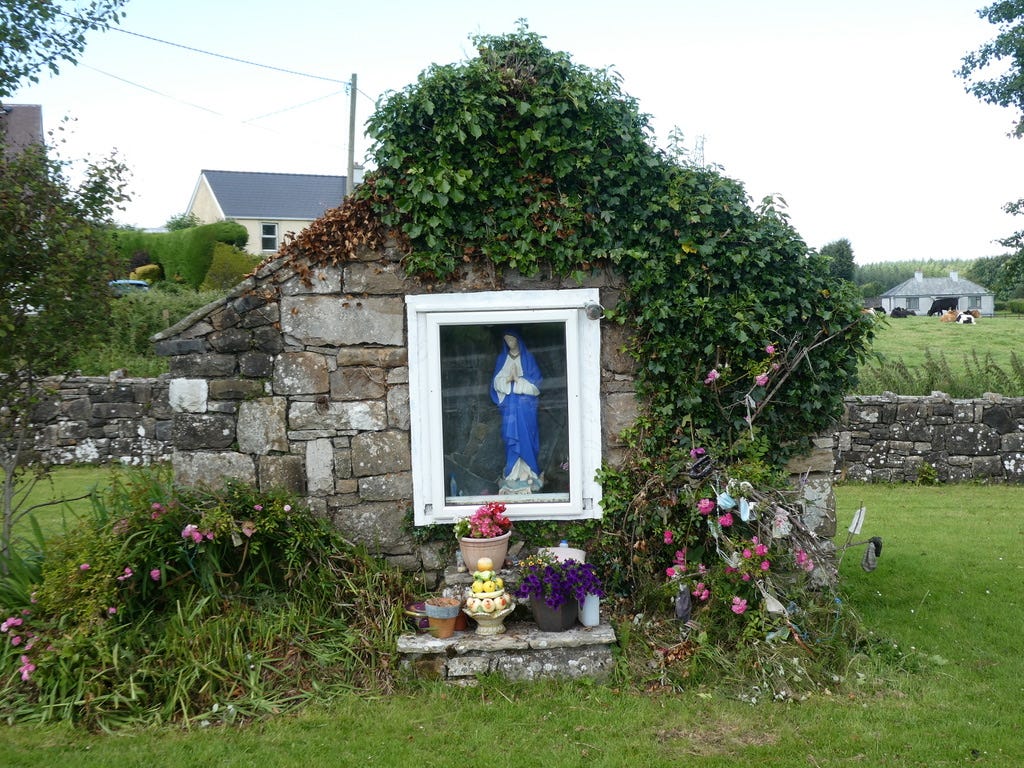
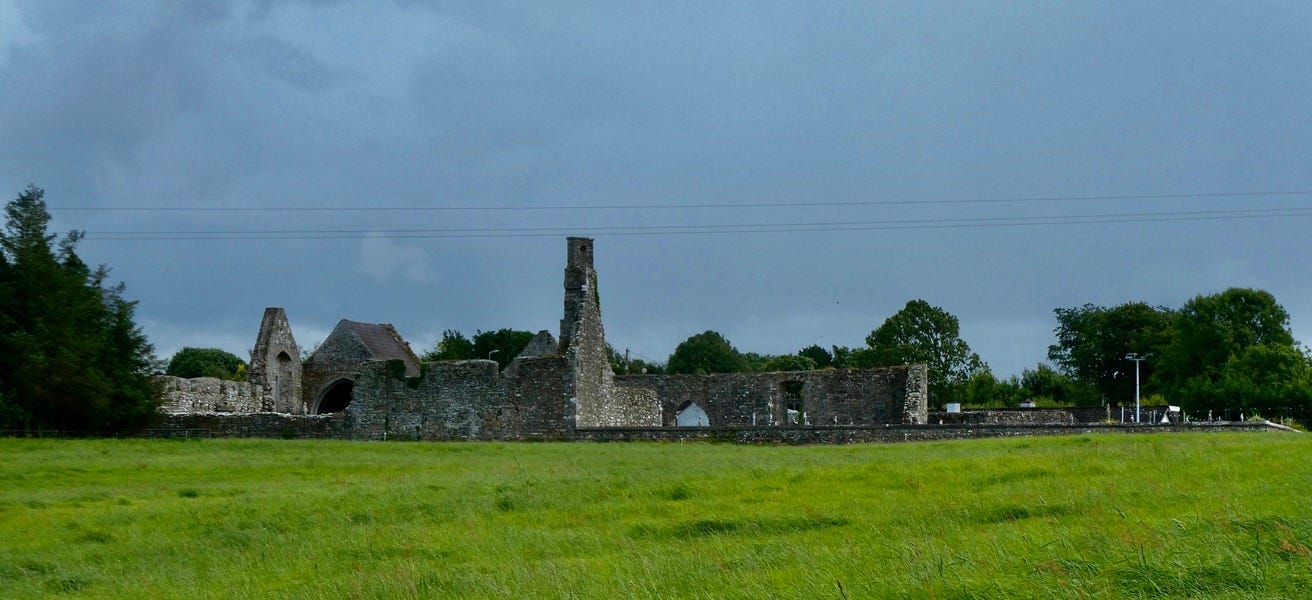
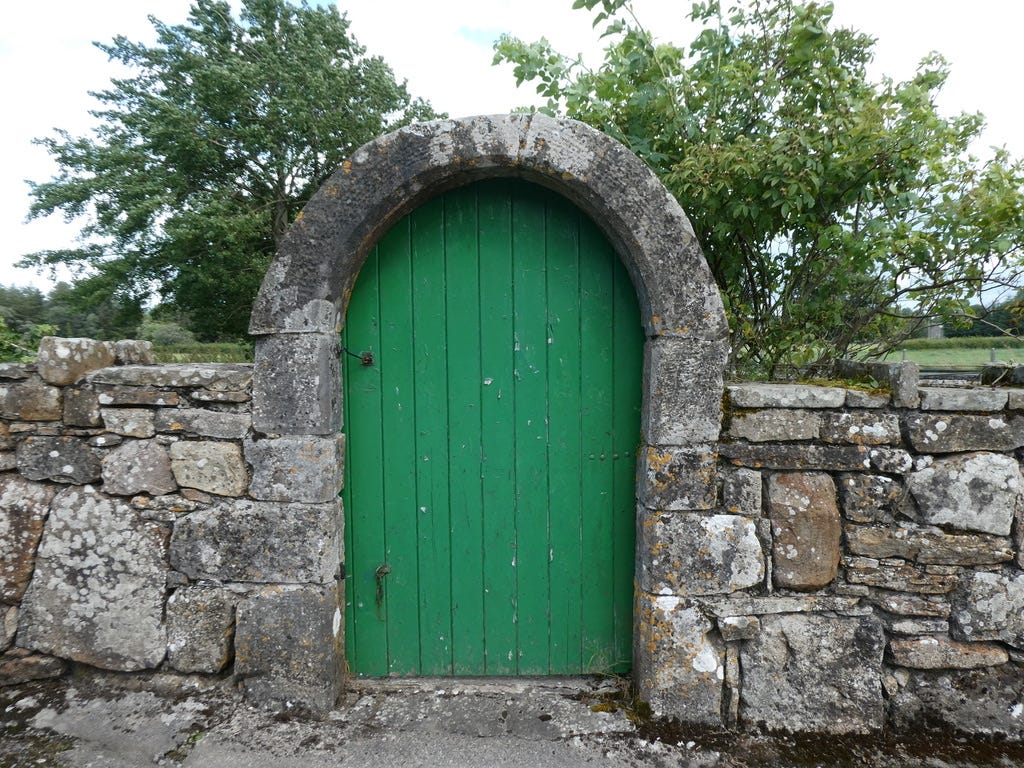
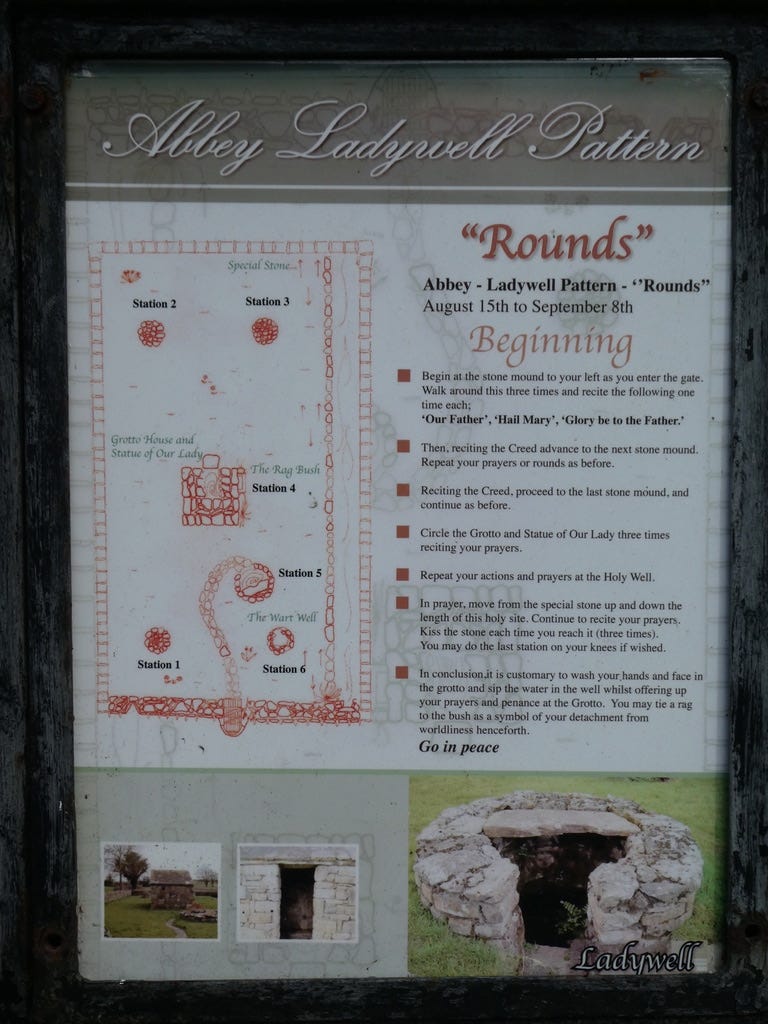
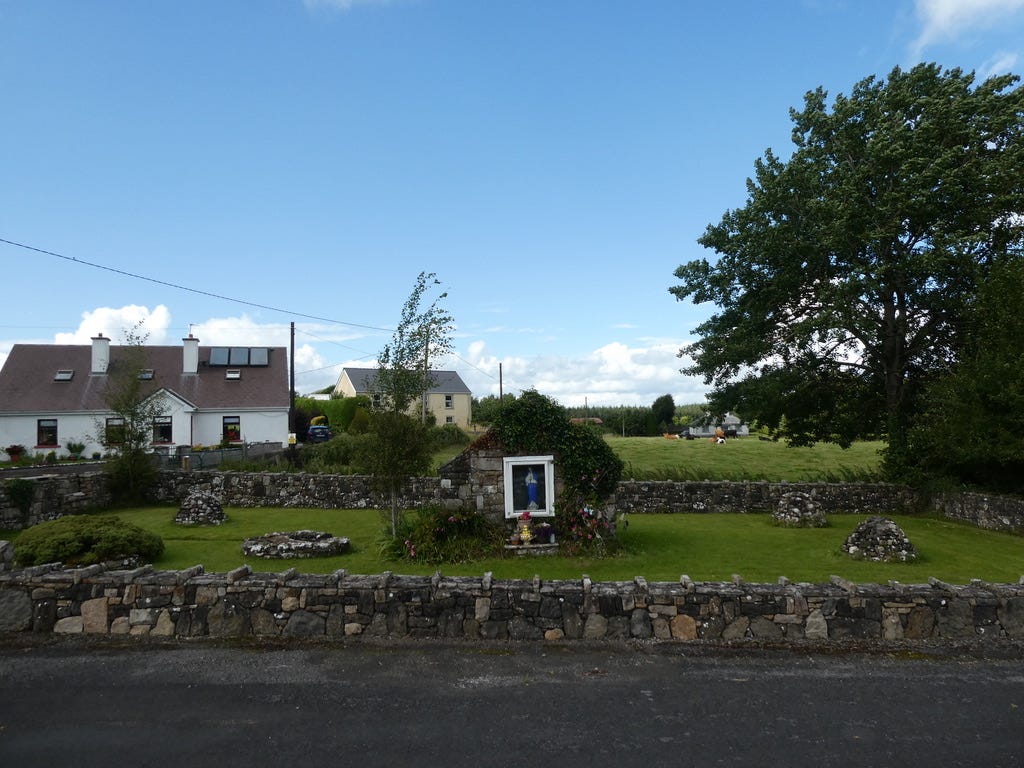
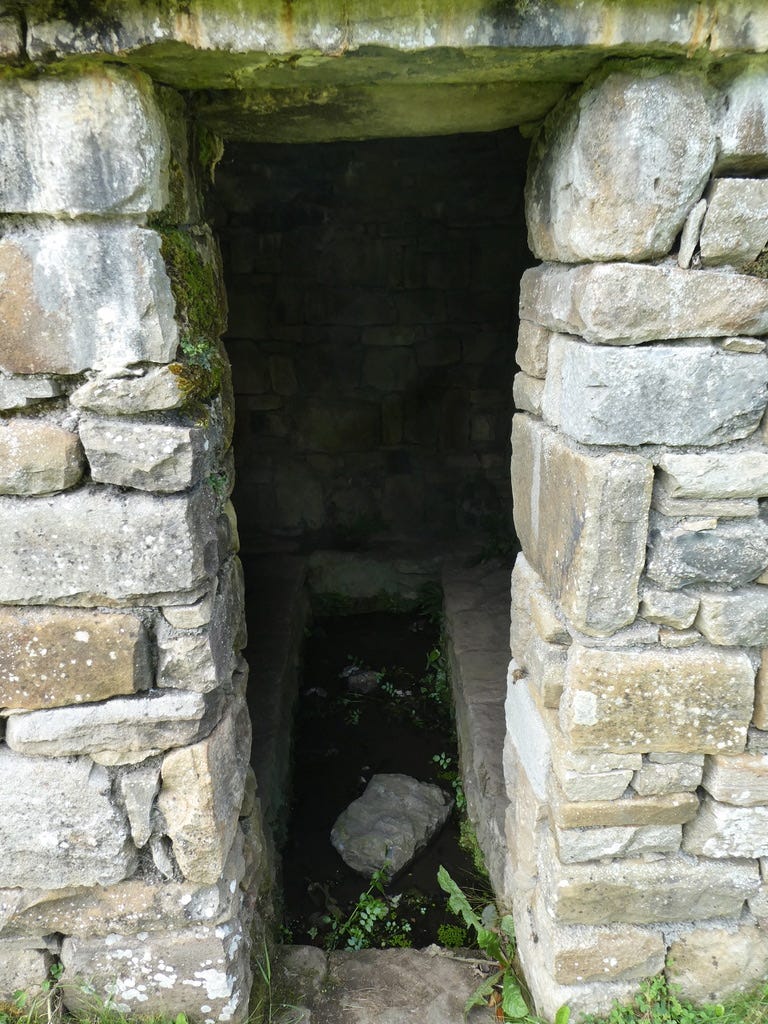
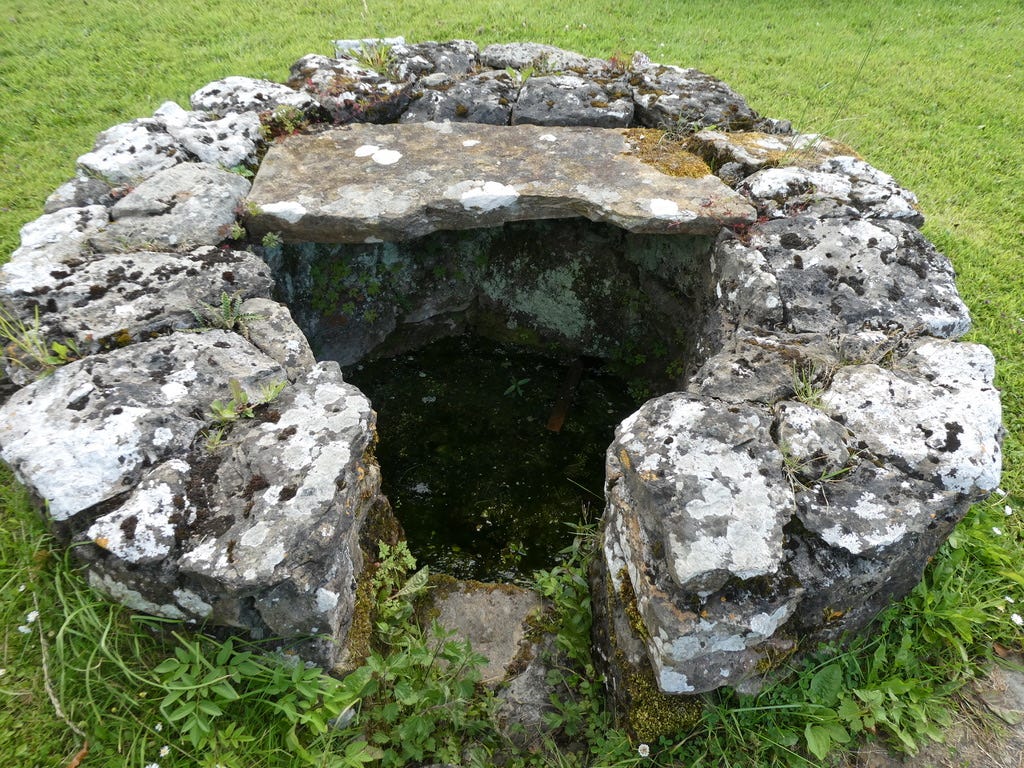
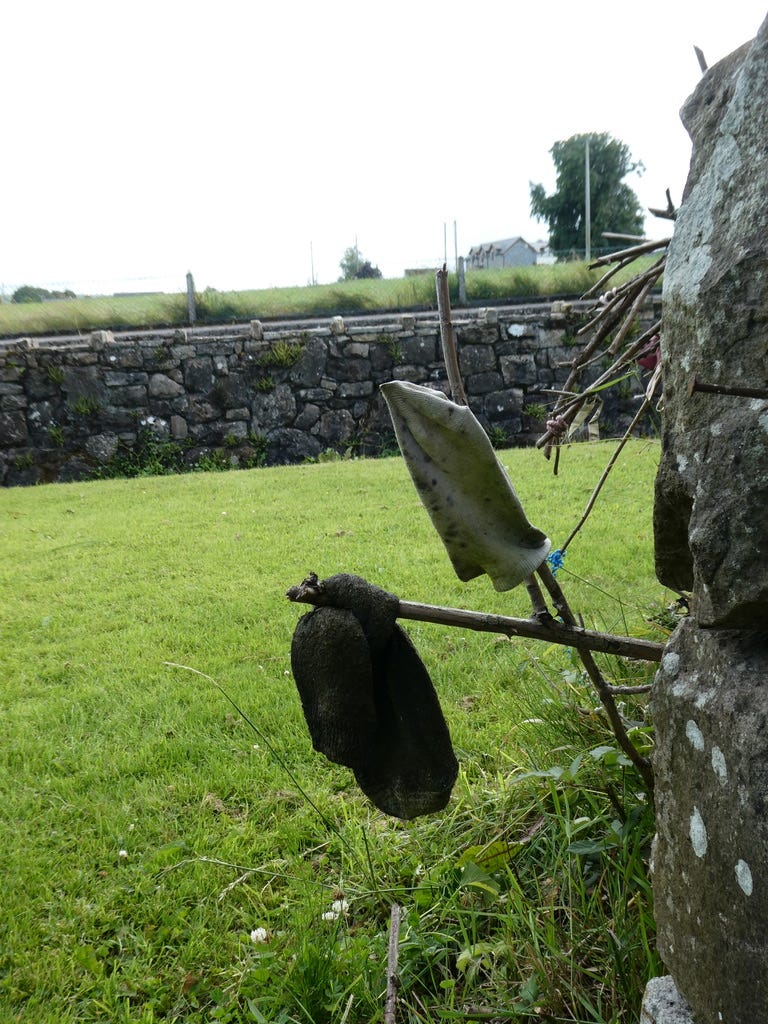
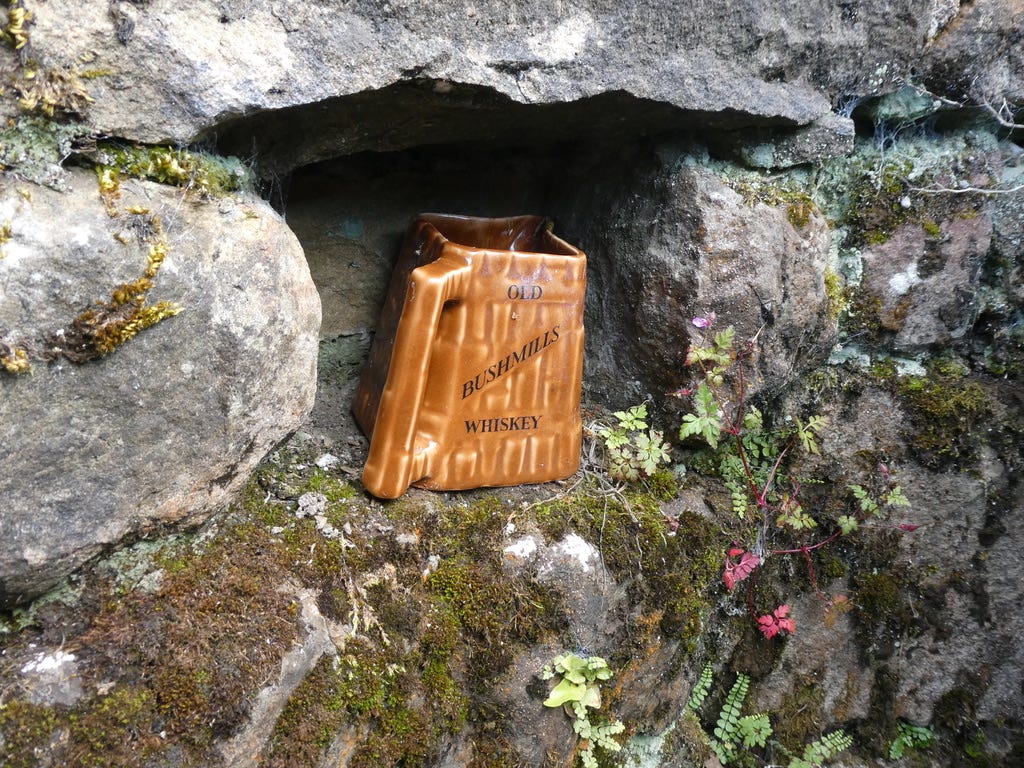
"We can't bear too much neatness, or too much reason." Wonderful and deep, thank you.
Thank you for this beautiful piece on Sunday morning, Paul. A treat.
What do people "offer", and what is the sense of their offerings ? Is it supposed to be thanks, in relation with their ailment, or what ?
I am moved by the idea of people going around stations on their knees.
That must really get the hackles of the sophisticated enlightened up. Very disturbing.
But I know that on his deathbed, Voltaire called for his mother, and she had been dead for many years, probably.
I notice that maybe in recent years it's mainly the women ? going around on their knees, at least in France, where faith is often considered to be a woman's thing., and... unmanly.
But there are not all that many "gentle men" around our world these days. A gentleman is not a weakling or a coward, but a man who disciplines his strength and puts it to good use.
You made this well beautiful this morning. And it is in your backyard, if I understand correctly.